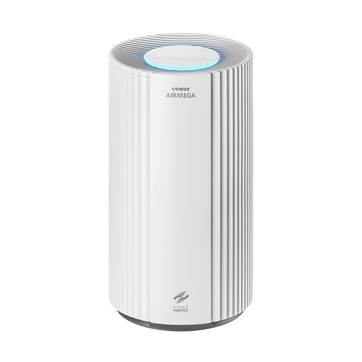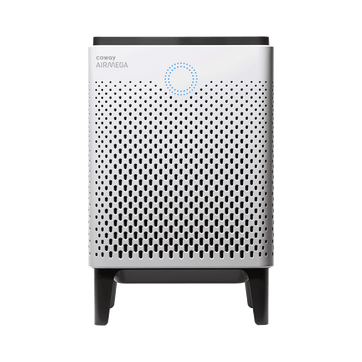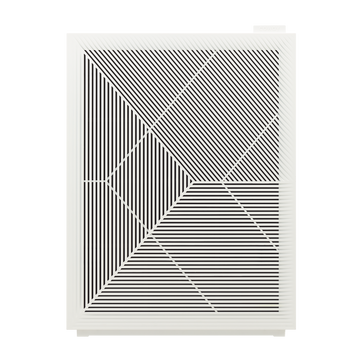
What is...formaldehyde?
A naturally occurring compound, formaldehyde is probably lurking throughout your home. That’s because it’s used in a wide variety of building and other materials—pressed wood, particle board, cabinets, varnishes and fabrics, to name a few examples. But it’s also highly volatile and researchers have tied its off-gasses, the term for volatile organic compounds (VOCs) and other chemicals given off by a manufactured product or material, to many illnesses, from sore throats to asthma. In 2011, the US National Toxicology Program described formaldehyde as “known to be a human carcinogen.”
The basics
Formaldehyde resins are used in many construction products. As a result, they’re one of the more common indoor air pollutants. While levels are the highest in newer homes or homes with new construction, the worst health effects are associated with breathing in formaldehyde over an extended period. That’s because, long-term, those harmful chemicals build up in your system.
Because it irritates the airways, people with breathing conditions are especially sensitive to formaldehyde. In addition, children and the elderly are more vulnerable. A recent review of studies showed a strong association between exposure to formaldehyde and the development of childhood asthma.
Fast facts
- Formaldehyde was first reported in 1859 by the Russian chemist Aleksandr Butlerov.
- The European Union has banned the use of formaldehyde as a biocide; that’s defined in European legislation as a chemical substance or microorganism intended to destroy, deter, render harmless or exert a controlling effect on any harmful organism by chemical or biological means.
- Formaldehyde levels rise with increases in temperature and humidity.
- The three products that emit the highest concentrations of formaldehyde are medium density fiberboard, hardwood plywood and particle board.
Clear the air
- Open windows as much as possible to let in fresh air.
- Try to keep the temperature inside your home at the lowest comfortable setting.
- Spend as much time outdoors in fresh air as possible.
- Use a smart air purifier with a HEPA filter, like Coway Airmega, that can help eliminate harmful gasses and particles from the air.
Disclaimers
1Coway air purifiers has been proven to trap dust, pollen, dander, viruses and bacteria in the air based on KCL (Korea Conformity Laboratories) testing.They have been tested in a 30㎥ size chamber according to the Korea Air Cleaning Association standard (SPS-KACA 002-132:2022 Modified) to measure the 0.01㎛ size of particle removal rate. It was tested on maximum airflow speed in normal room temperature and humidity conditions. The performance may vary in the actual living environment of customers.
→ Tested with Airmega Aim, 150, 160, AP-1216L, AP-1512HH, AP-1512HHS, 200M, Icon, IconS, 230, 240, 250, 250 Art, 250S, 300, 300S, 400, 400S, ProX
299.97% of viruses, bacteria, fungi and pollen were verified to be removed from the air for Coway air purifiers which have Green True HEPA™ filter applied based on the Japan Food Research Laboratories(JFRL) testing according to JEM 1467 standard.
→ Tested with Coway Airmega AP-1512HH, AP-1512HHS, 250, 250 Art, 250S, 300, 300S, 400, 400S
→ All tested by JFRL and received above result within below time.
All tested by JFRL and received above result within below time.
- Virus: Tested with Escherichia coli phage ΦX174 NBRC 103405, 60 minutes
- Bacteria: Tested with Staphylococcus epidermidis NBRC 12993, 60 minutes
- Fungi/Mold: Tested with Penicillium citrinum NBRC 6352, 60 minutes
- Pollen: Tested with Cedar Pollen extract, 60 minutes
3Aerosol test conducted in a Biosafety level 3 laboratory with two Coway air purifier models, Coway Airmega 250 and 400 for removal of SARS-CoV-2 Aerosol by US based MRI Global, a not-for-profit laboratory and partner of US Department of Defense. The test was conducted in a 13.1ft3 chamber. Virus was aerosolized for 15 minutes and the product was turned on high for 2 minutes. Result showed each product effectively removed over 99.98% of the SARS-CoV-2 in 2 minutes. This is a result from a laboratory experiment condition and result may vary in different conditions. This result does not imply it kills SARS-CoV-2 or prevents the transmission of Covid-19. Coway Airmega 250S and 400S are identical to the tested models and has equal performance with an additional mobile connectivity function.
4The concentration of ammonia, acetaldehyde and acetic acid were proven to be removed within 30 minutes by FCG Research Institute, Inc. Human Life Science Lab. It is not a demonstration result in the actual use space. Not all odors and gases may be supported. → Tested with Coway Airmega 150, 160, AP-1512HH, AP-1512HHS, 400, 400S
5The coverage area of the air purifier is based on an area where the air cleaner can make two air changes per hour (ACPH). An air change per hour translates to how many times an air purifier can clean an area, assuming the height of a ceiling to be 8 ft, in one hour. Therefore ** means two air changes per hour means that the cleaner can clean the area once every 30 minutes and * means air changes per hour means that the air purifier can clean the area once every 60 minutes.
10Terms and conditions apply. Discounts, including promotions, coupons, bundle discount and subscription discount, cannot be stacked on top of other coupons. During promotional periods, discount codes will not be able to be applied to orders. Promo codes may apply to products only—filters, accessories, and new products within 3 months of the release date are not included.




















